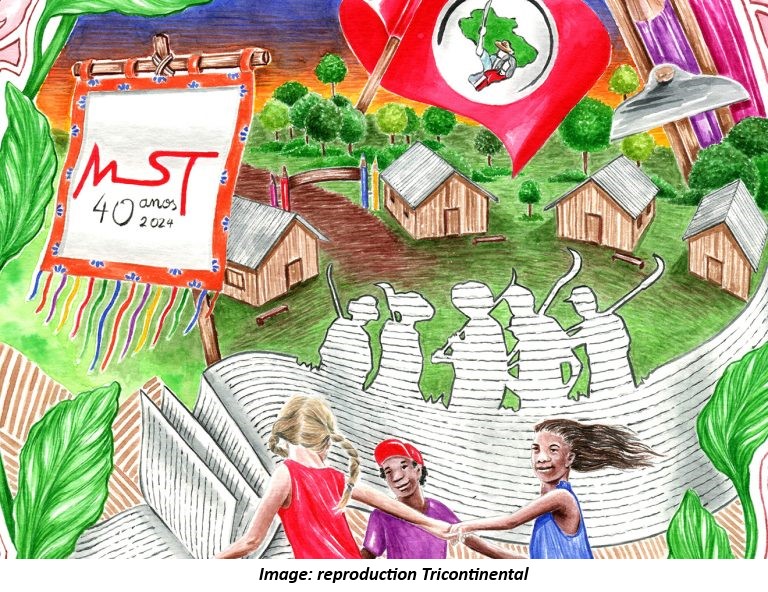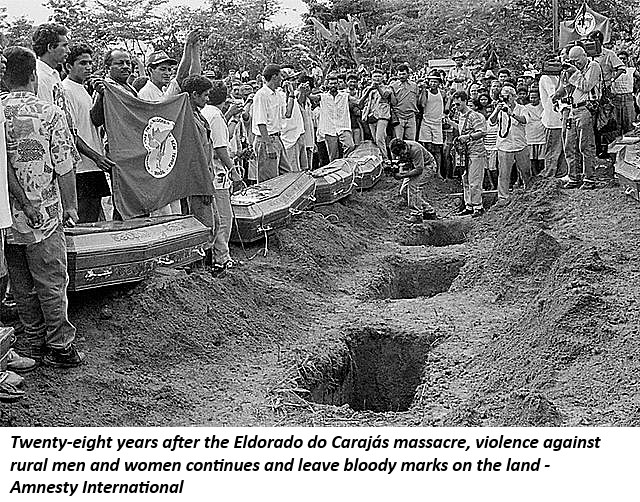A national mobilization is underway to commemorate the 28th anniversary of the Eldorado do Carajás martyrs' deaths and to celebrate 40 years of the MST's struggles
...
A national mobilization is underway to commemorate the 28th anniversary of the Eldorado do Carajás martyrs' deaths and to celebrate 40 years of the MST's struggles
...
This dossier focuses on the MST’s tactics and forms of organization and why it is the only peasant social movement in Brazil’s history that has managed to survive for o ver a decade in the face of the political, economic, and military power of Brazil’s large landowners
ver a decade in the face of the political, economic, and military power of Brazil’s large landowners
Introduction
In September 1982, thirty rural workers and twenty-two clergy members took part in a meeting in Goiânia, in Brazil’s Central-West region, convened by the Pastoral Land Commission (CPT, a branch of the Catholic Church inspired by liberation theology). This small group of workers would go on to lead the first peasant protests to take place after eighteen years of repression at the hands of the business-military dictatorship that governed Brazil for twenty-one years (1964–1985).
READ THIS IN DEPTH ANALYS OF THE MST'S ORGANIZATION
NOTE: The article includes links to the dossier in PDF format in English and Spanish
In order to use the “Auto-Translate” function: Click the closed caption button; Click the setting button; Click on “Subtitles/CC(1)”; Change from “Portuguese (auto-generated)” to “Auto-Translate”; and Select your language from the drop-down menu...
The more th an 20 occupations carried out by the Landless Workers' Movement (MST, in Portuguese) on Red April(link is external) 2024 reveal a disturbing reality: not enough progress was achieved in the struggle for land reform since April 17, 1996, the date of the Eldorado do Carajás massacre(link is external), which has now become World Day of Struggle for Land.
an 20 occupations carried out by the Landless Workers' Movement (MST, in Portuguese) on Red April(link is external) 2024 reveal a disturbing reality: not enough progress was achieved in the struggle for land reform since April 17, 1996, the date of the Eldorado do Carajás massacre(link is external), which has now become World Day of Struggle for Land.
Twenty-eight years ago(link is external), a camp was set up at Curva do S, in the town of Eldorado do Carajás, in the southeast region of Pará. Around 1,500 people planned to march to Belém, Pará’s capital city, where they would demand that the National Institute for Colonization and Agrarian Reform (Incra, in Portuguese) expropriate the Macaxeira farm, occupied by 3,500 landless families.
READ MORE ON THE ELDORADO MASSACRE